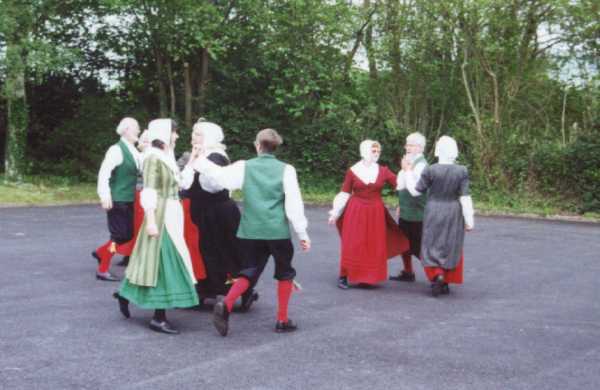
| Teulu Tefeca - Celebrating 250 Years |
I had seen some publicity about "Georgian Dancing" and was expecting a group of men with mustaches leaping in the air and waving swords but the dancers came from Pontypool not Tbilisi and performed dances from the Georgian period!

|
The influence of religion on dance
in the eighteenth century Welsh rural society from the eighteenth century onwards was steadily influenced by the puritanical outlook of the Methodist movement. Calvinism fostered the same attitude in parts of the Netherlands, France, Switzerland and Germany. These religious reformers believed that idle pastimes, however innocent, distracted people from cultivating their spiritual life. In 1714, when the minister, Rhys Pryddech, published a list of twelve sins, the first sin on his list was mixed dancing. William Prynne wrote, "Dancing is to be abandoned by all good Christians" As the chapel was a very important factor in the life of the Welsh, it was able to oust the traditional customs of the community to such an extent that Edward Jones wrote in 1802, "Wales, which was formerly one of the merriest and happiest countries in the world, is now become one of the dullest." Fortunately, Abram Wood brought gypsy fiddlers from Ireland to Wales about 1730. They took enthusastically to Welsh folk tunes, so kept the tradtional tunes alive, playing them on their home-made violins. Travelling musicans were still welcome in many areas and Noson Lawens would be held at the local inn, or in farmhouses, where clog dancers would show their virtuosity, so clog dancing never died out. Dawn Webster |
 |
 |
 |
 |